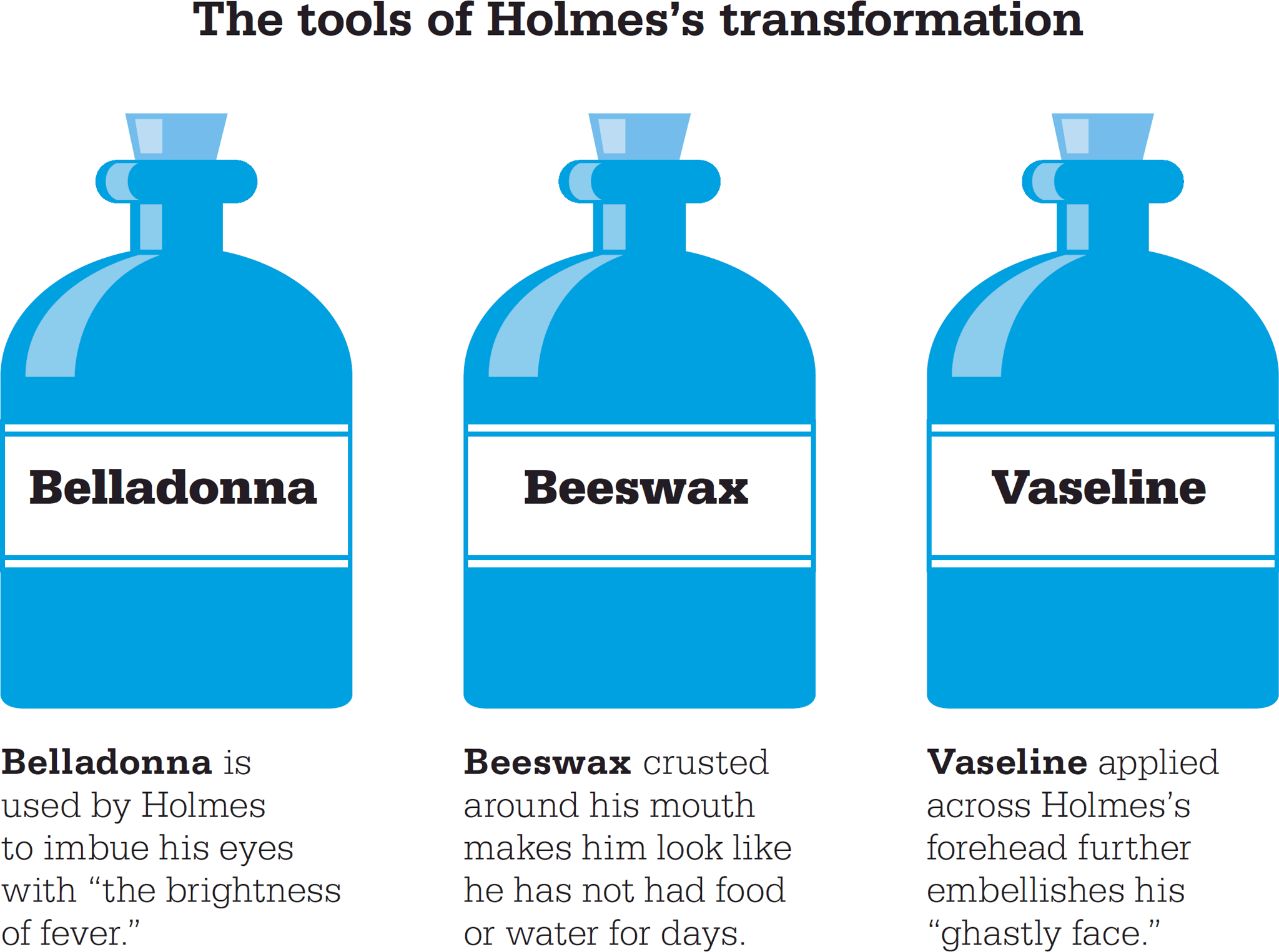
IN CONTEXT
Short story
US: November 1913
UK: December 1913
His Last Bow, 1917
Mrs. Hudson Holmes’s landlady.
Culverton Smith Planter and amateur microbiologist.
Inspector Morton Scotland Yard detective.
Holmes often goes to great lengths to solve his cases, and in “The Adventure of the Dying Detective” he takes his dedication to the cause to a new level. Having been previously unable to prove a case of poisoning—and having provoked the wrath of the murderer in the meantime—Holmes prepares a cunning trap, while in the process coldly and calculatedly deceiving those who love him most into believing that he is dying.

Holmes at death’s door
One foggy November day, a distressed Mrs. Hudson calls on Watson with devastating news: Holmes is at death’s door. Poor Mrs. Hudson; Holmes, not content merely with swamping her house with acrid tobacco fumes, keeping wildly uncivilized hours, conducting “weird and often malodorous scientific experiments,” and firing his revolver indoors—making him the “very worst tenant in London”—now adds extreme emotional manipulation to the catalog of indignities he has perpetrated on his landlady over the years.
A distraught Watson rushes to Holmes’s bedside to find him rambling deliriously about oysters and apparently suffering from a highly contagious tropical disease he says he must have caught while “working on a case” among Chinese sailors at Rotherhithe docks. Not caring for his own safety, Watson wants to examine him, but Holmes insists he stay back, woundingly making reference to his “mediocre qualifications.” Mysteriously, Holmes also sharply reprimands him when he is about to touch a small ivory box on the mantelpiece.
Holmes dispatches Watson, now bitterly hurt as well as distressed at the imminent death of his friend, to fetch the one man Holmes says can help him: Culverton Smith, a planter and amateur microbiologist visiting London from Sumatra. On his way out, Watson encounters a strangely excited Inspector Morton of Scotland Yard (described here as “an old acquaintance,” but never explicitly encountered anywhere else in the canon).
"The sick room was a gloomy spot, but it was that gaunt, wasted face staring at me from the bed which sent a chill to my heart."
Dr. Watson
A formidable foe
The ill-tempered Smith is small and frail, but with “menacing” eyes, and a “skull of enormous capacity.” Clearly he is a mastermind from the same mold as Moriarty. Initially reluctant to receive Watson, he brightens up when he hears of Holmes’s plight: “He is an amateur of crime, as I am of disease. For him the villain, for me the microbe.” Smith agrees to call on Holmes.
Obeying Holmes’s strict, cryptic instructions, Watson returns alone to 221B and hides behind his friend’s bed. When Smith turns up, it is to gloat. Thinking he and Holmes are alone, he admits to sending the small ivory box, which he had booby-trapped with a deadly disease. He also confesses to murdering his nephew in a like manner to secure a “reversion”; that is, to get his hands on the young man’s property. At Holmes’s request, he turns the gaslight up, unwittingly signaling to Inspector Morton outside, who promptly arrives to make the arrest. With Watson as a witness to all that has been said, the game is up, and Holmes admits to deceiving his adversary as well as his friend.
The truth comes out
Holmes tries to soothe Watson by explaining that he could never have deceived him if he had let him get close—“Do you imagine that I have no respect for your medical talents?”—and that in turn Watson could never have fooled Smith without himself really believing that Holmes was dying. Having not eaten for three days, he suggests a restorative meal at one of their favorite establishments, Simpson’s-in-the-Strand. That he has put Watson and Mrs. Hudson through the wringer does not seem to cross his mind.
A DEADLY COSMETIC

Holmes fooled Watson and Mrs. Hudson by dilating his pupils with belladonna, smearing beeswax around his mouth, and rubbing petroleum jelly on his forehead. The belladonna that Holmes uses would have come from Atropa belladonna, or deadly nightshade. Highly poisonous, belladonna’s Latin name (which translates as “beautiful woman”) derives from a habit common among Venetian ladies during the Renaissance of using the atropine from the plant to dilate their pupils. As a former ophthalmologist, Conan Doyle would have been well aware of its properties.
A sensational case took place in New York in 1893, when doctor Robert Buchanan was convicted of murdering his wife with morphine: he had also given her belladonna to disguise the characteristic narrowing of the pupils that would betray the presence of the drug. During the trial, the courtroom was subjected to a horrifying demonstration in which a cat was given a fatal dose of morphine, and then belladonna was applied to its eyes to show the effect.
